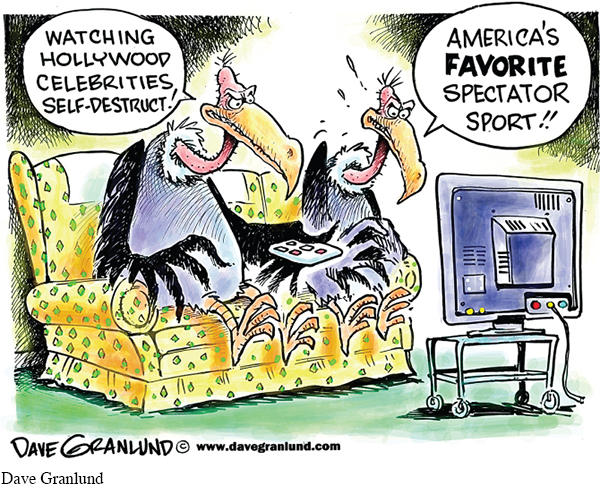The Risks of Analogy
The problem with analogies is that no two things are ever entirely alike. By definition, an analogy is comparing apples to oranges, and that makes it vulnerable as an argument strategy. The stronger the comparison, the more similarities there are, but as soon as the differences begin to surface, the analogy weakens. When the differences are more pronounced than the similarities, you’re in the territory of a faulty analogy, which is a logical fallacy.

For instance, think about this cartoon. For some, it probably hits the spot: those big ugly vultures, birds of prey, sitting on a couch watching a little television point up the wrong-
These questions do not establish definitively that the analogy is “wrong”—but they point to the vulnerability of analogy as a rhetorical move in argument. The punch of the analogy in this case may be outweighed by the potential weakness inherent in drawing a comparison between birds of prey and people’s fascination with celebrities gone wrong. The best advice is not to rely on an analogy as your main rhetorical strategy unless you’re 99.9 percent sure that your audience will see the similarities that you do.